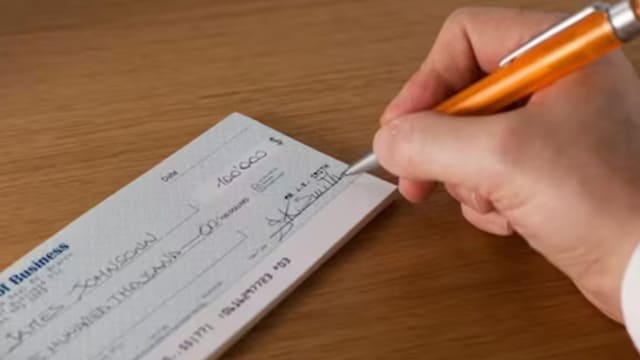SOURCE : NEW18 NEWS
Last Updated:May 10, 2025, 13:00 IST
A blank cheque only contains the account holder’s signature and no payee information or amount.
While it is not necessary, a blank cheque may be preferred as security by many lenders. (Representative Image)
Personal loan applicants may be asked to provide blank cheques by banks and non-banking financial institutions (NBFCs), but it is not mandatory. A blank cheque is a signed cheque devoid of other information, such as the amount or the name of the payee.
Knowing the significance of a blank cheque when asking for a personal loan may help ensure a smooth approval process and prompt disbursement.
Recommended Stories
A blank cheque only contains the account holder’s signature and no payee information or amount. The date is sometimes included. In most cases, the recipient fills in the payee’s name and amount later.
Function of Blank Cheques in Personal Loans
It is important to remember that a black cheque is not mandatory for a personal loan, but the lender’s policies may specify otherwise.
A personal loan requires a blank cheque for security purposes. It is not required to submit a blank cheque when asking for a loan.
For personal loans, it can rely on the terms and conditions set forth by the bank or NBFC. A blank cheque can be filled out and encashed by the lenders on the due date.
Lenders may want a blank cheque to ensure they can recover the loan amount if the borrower is unable to make payments on time. In the event of a default, the lender may utilise the cheque to take the amount owed out of the borrower’s bank account.
Lenders may not require a blank cheque if you take out a secured personal loan (such as a gold loan) because they already have collateral as security.
A blank cheque is necessary to reassure lenders that their funds will not be lost. Although digital banking transactions have mostly replaced cheques, several financial organisations continue to employ cheques as a fallback option if payments are missed.
While it is not necessary, a blank cheque may be preferred as security by many lenders. However, if a blank cheque with no payee name or amount on it ends up in the wrong hands, it could be misused.
Borrowers must ensure they maintain a copy or record of every cheque they have given to the bank or NBFC in order to prevent fraudulent usage.
Borrowers need to keep a substantial amount in their accounts to prevent the cheque from bouncing. Should it occur, the borrower might be subjected to legal action.
Currently, most lenders use ECS or NACH auto-debit mandates, which allow EMIs to be automatically taken out of your bank account without requiring a blank cheque.
Furthermore, the simplest approach to prevent fraud is to fill out the check with the lender’s name and amount before giving it to them, even if they insist on a blank cheque.
- First Published:
May 10, 2025, 13:00 IST








